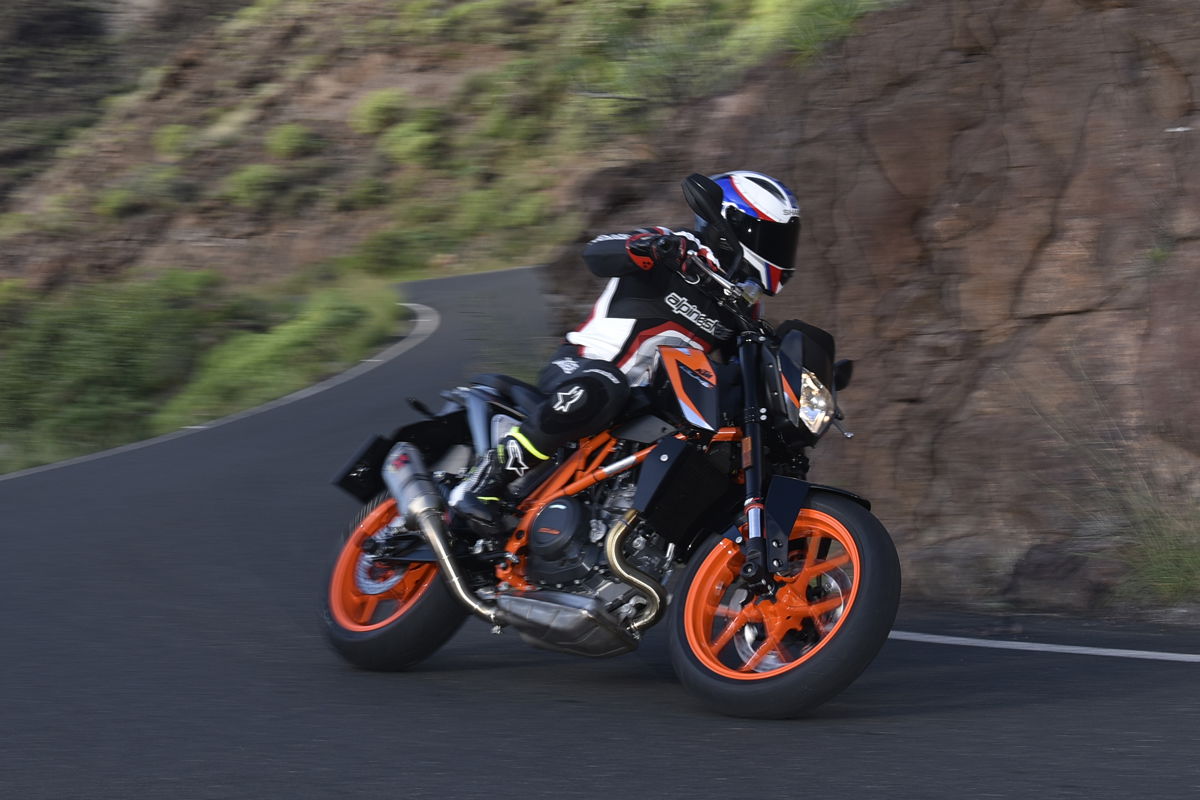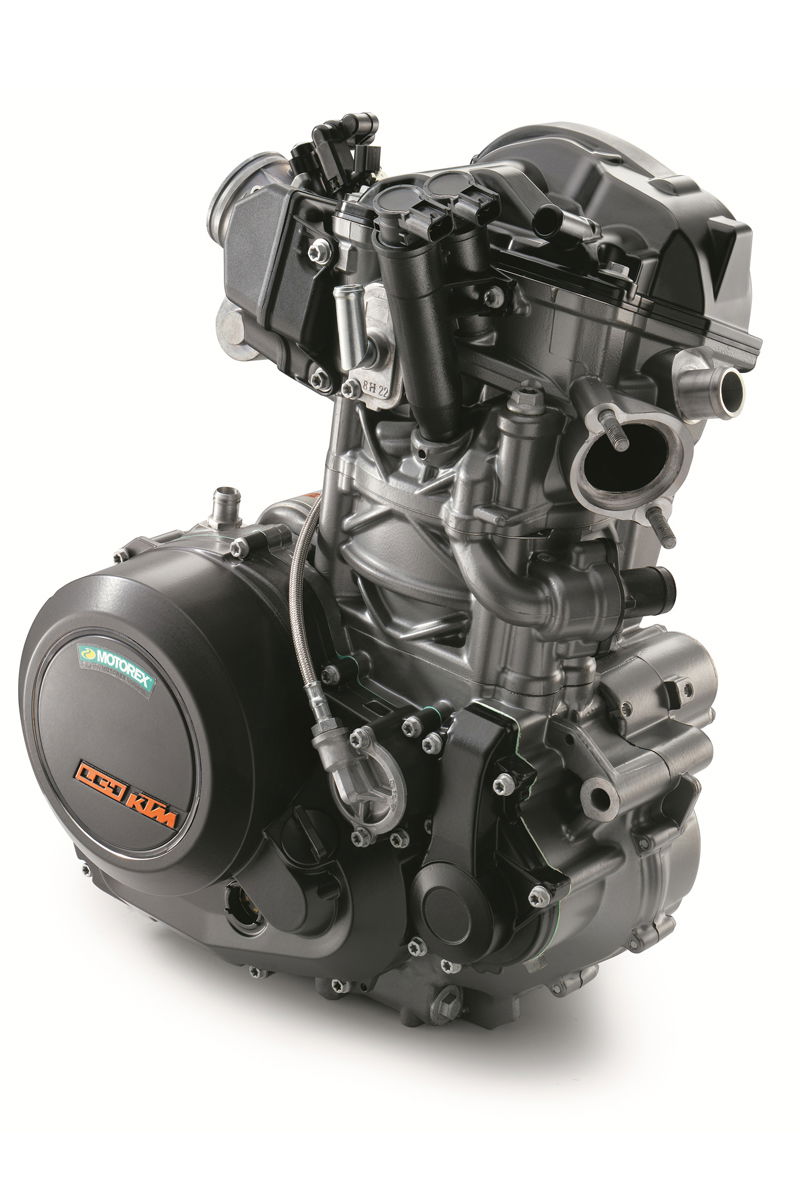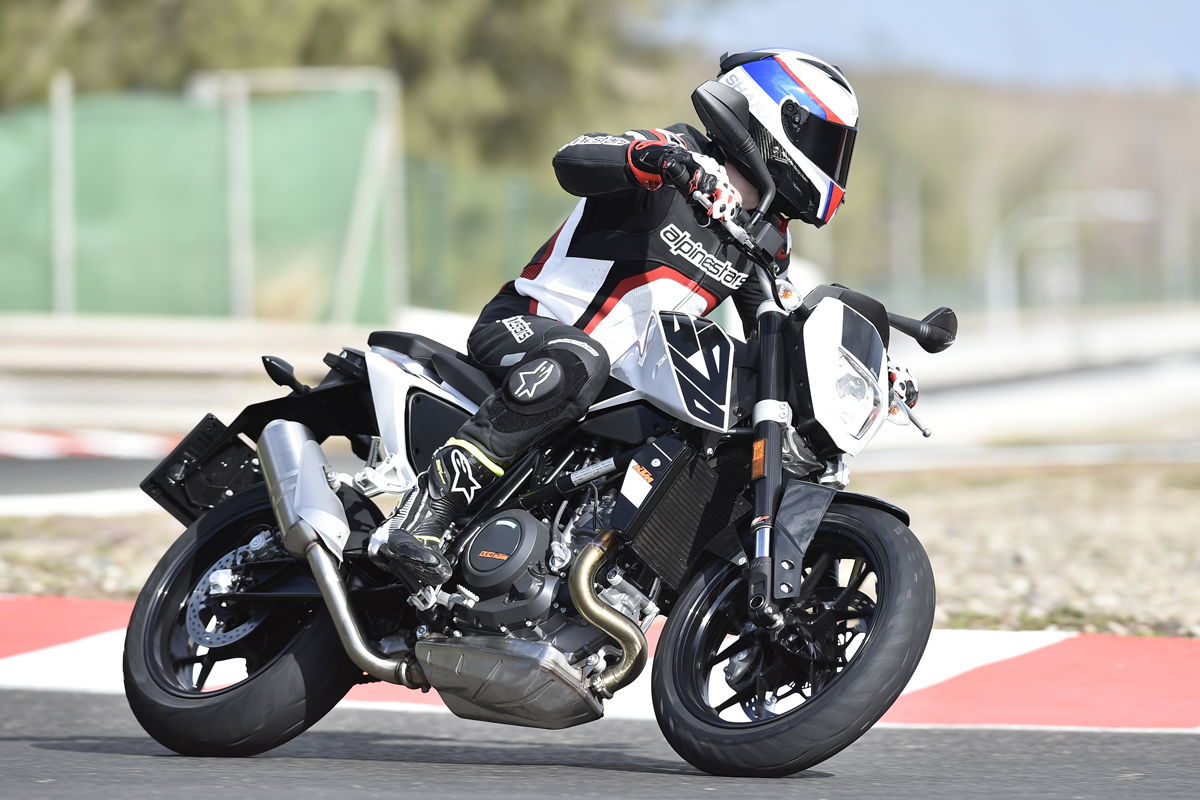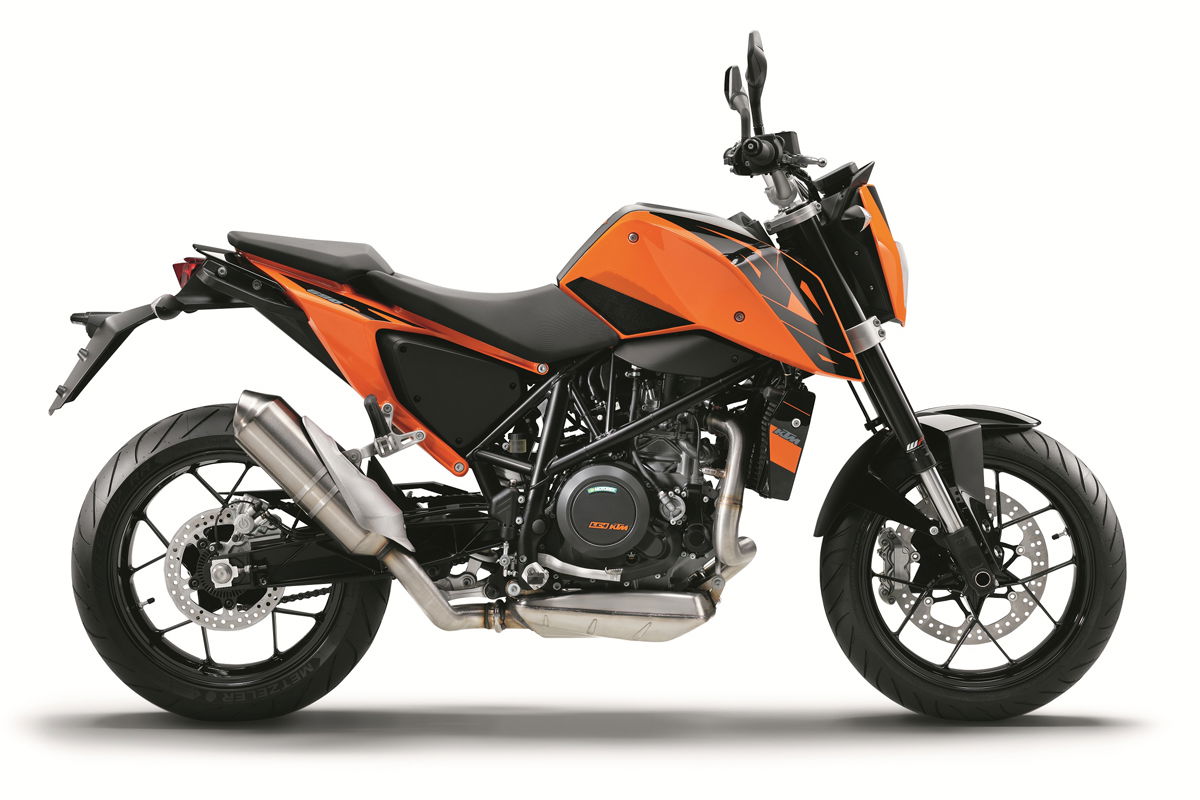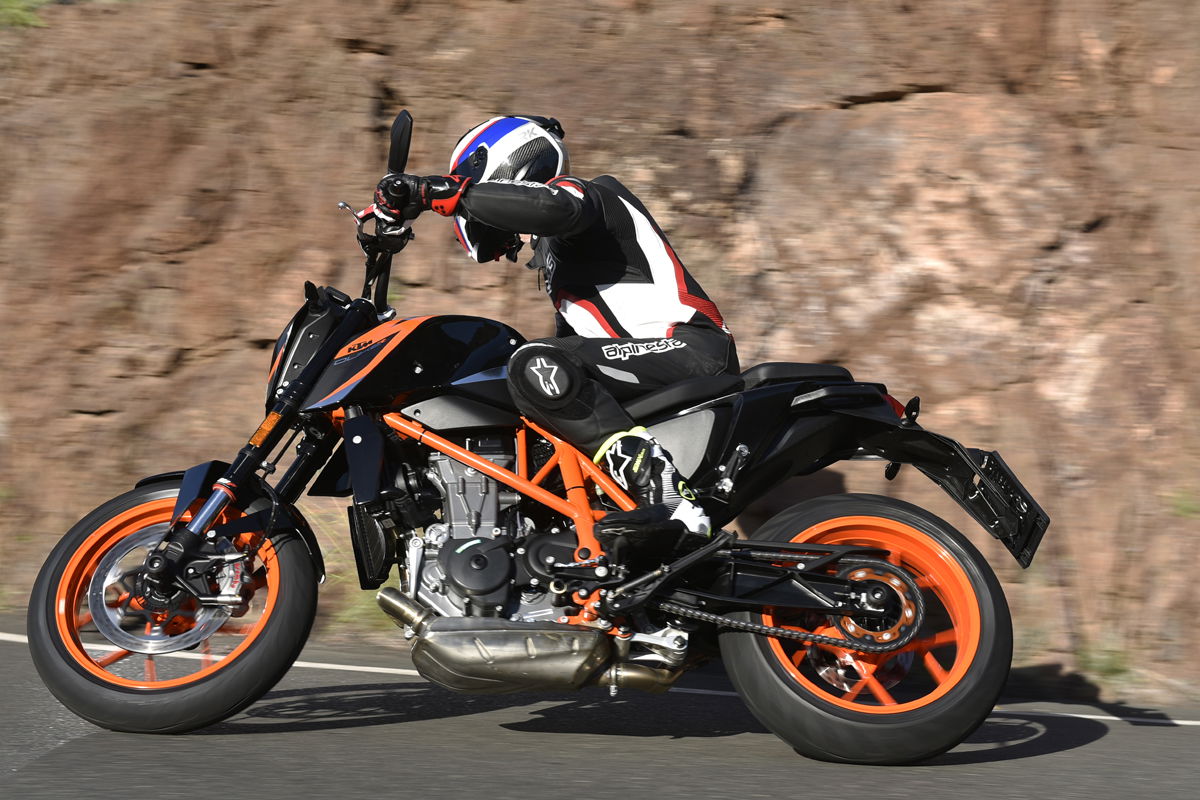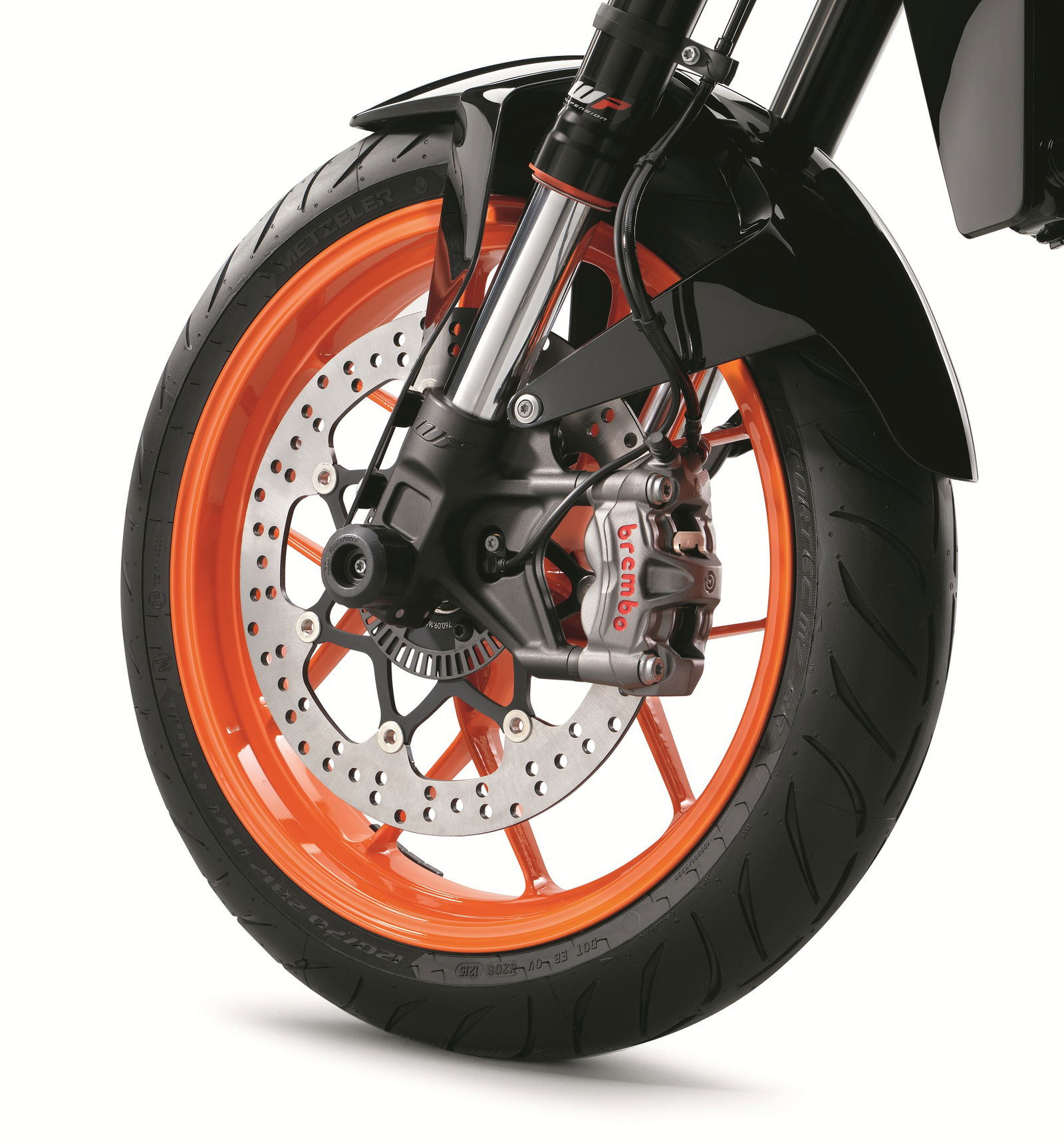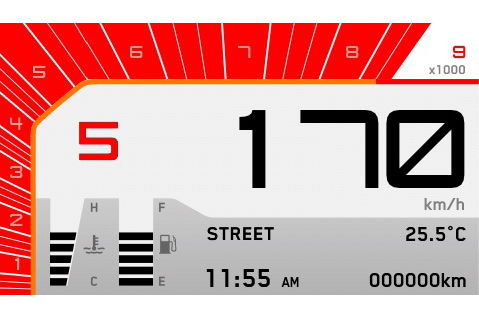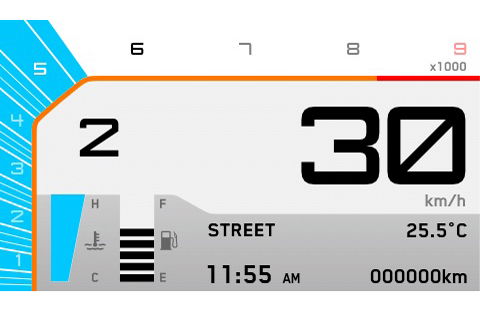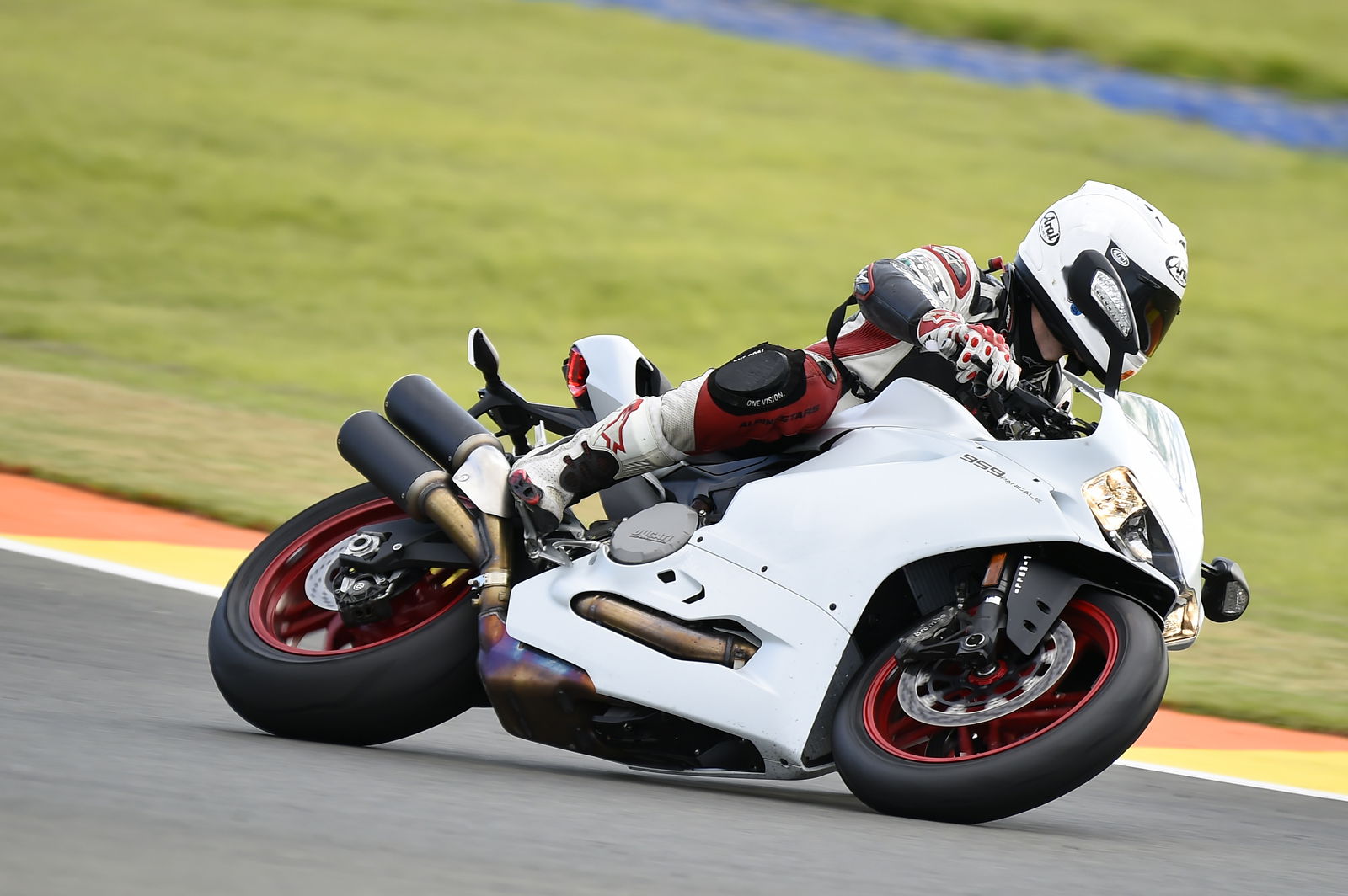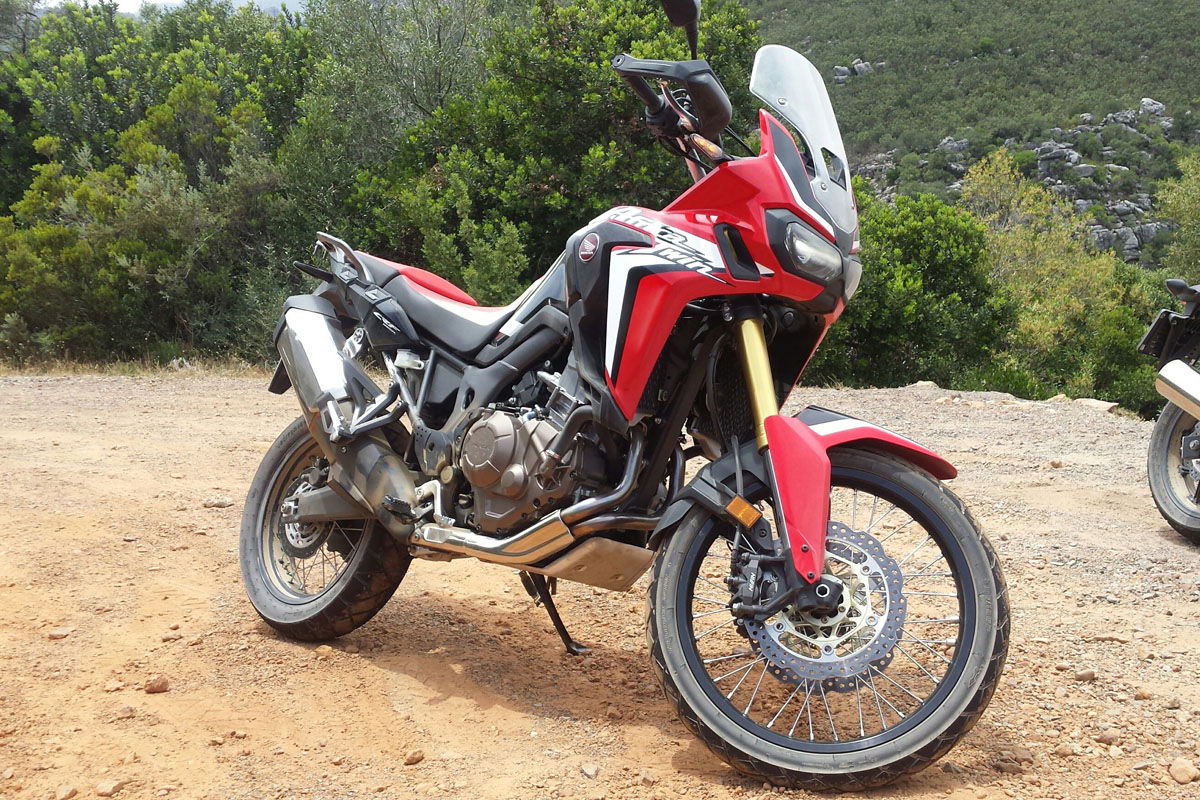First ride: KTM 690 Duke and 690 Duke R review
For 2016 the new KTM 690 Duke is more powerful and more refined, but are its manners fit for a king?

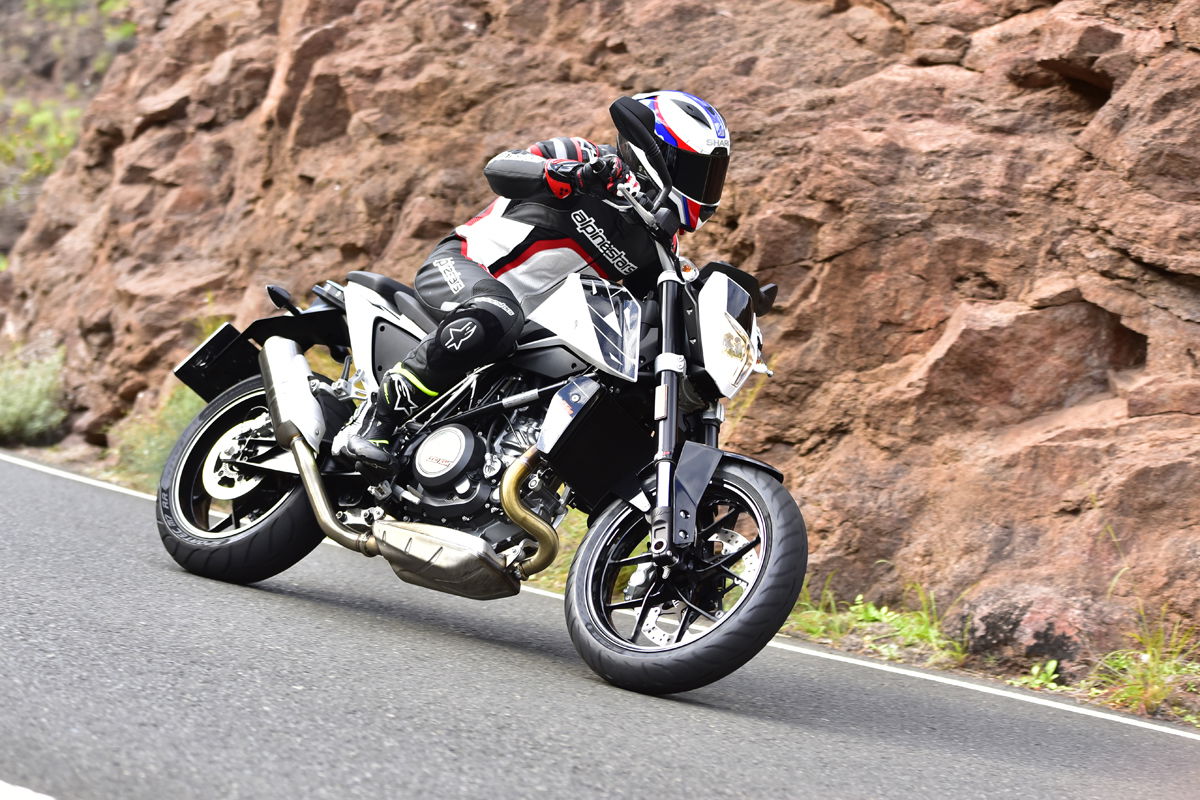
THE Duke is the foundation of KTM’s road range. It’s the bike that took the Austrian manufacturer from the dirt to the road, laid the groundwork for its range of road bikes and is a shining example of KTM’s commitment to single-cylinder engines.
Now in its third generation, the new 690 Duke is the latest affirmation of that commitment. For 2016 the new LC4 engine has been heavily reworked from top to bottom. The new cylinder head houses a redesigned valve train that incorporates an additional balancer shaft. The bore has been enlarged by 3mm, while the stroke has been decreased accordingly. The crankshaft, con rod and piston are new too.
The upshot of the engineers’ time spent refining the engine is 7% more claimed power and 6% additional claimed torque. That equates to 73hp and 55lbft, or 75hp for the R model thanks to its titanium Akrapovic exhaust.
KTM says the LC4 is the most powerful single-cylinder engine in a production motorcycle. The new motor also revs to 9,000rpm (1,000 more than the previous engine) and supposedly vibrates less. It’s still housed in a trellis frame, which KTM says weighs 9kg. The complete bike tips the scales at a claimed 148.5kg dry or 147.5kg for the R. It's hard to compare weight with competitors' bikes since some quote dry, wet or kerb weight, with no explanation of what they consider a wet or kerb weight to be, but to give you an idea, the Yamaha MT-07 ABS weighs 182kg wet, while the kerb weight of the Kawasaki ER-6n is 204kg. It certainly feels light like an MT-07.
The launch happened on Gran Canaria, with most of the riding taking place on the twistiest roads I’ve ever been on, as well as some laps round a tight little track. The Duke’s low weight is noticeable as soon as it’s moving. It’s effortless to shift around at slow speed and turns into bends with the lightest of inputs, helped by the wide handlebar.
On the road, corners were rarely more than 10 seconds apart and the 690 Duke was the perfect tool for the job because it handles with such lightness and precision. It's so light and agile that the constant flicking between bends became secondary, allowing me to use more of my meager brainpower thinking about throttle inputs, braking and not riding off the edge of the mountain.
Handling was similarly effortless on circuit. One section contained a fast right-left kink, with the quickest way through being a near straight line. I only used that line once because it was more fun turning it into the bend and relishing the opportunity to lever the 690 Duke and Duke R from side-to-side at speed. Even with my stumpy arms, it was a simple job and both bikes changed direction as quickly as I could make them, with the front end always feeling stable.
The 690cc engine is eager and fuelling from the 50mm throttle body is crisp everywhere. The motor’s main performance, and I mean that in both a theatrical and mechanical sense, begins at 5,000rpm. Peak torque is delivered at 6,500rpm. With the engine between 5,000 and 8,000 rpm, a fat wallop of power is always within close reach to punch you forward.
KTM say it should satisfy experienced and novice riders and they're right – it can be as unintimidating or lively as you want. Open the throttle hard in the first two gears and the front wheel quickly divorces itself from the ground to start flirting with the air. Even under hard acceleration from second to third, I could feel the bars moving as the front went light.
Thanks to that additional balancer shaft, the new engine does indeed have the kind of manners that would impress a king. Over 3,000rpm it's refined enough to make you think it’s got more than one cylinder and the quicker it spins, the better it feels - I'd say it matches the smoothness of the MT-07's parallel-twin. There’s a bit of lumpiness under 3,000rpm and we'll have to wait until we can ride one in the UK to properly comment on its town manners.
The only time I could properly notice the dak-dak-dak thump from the engine was when I was deliberately inducing it by being lazy and trying to keep it in a gear I shouldn’t have been in. Perhaps that's an example of the 690 Duke being less flexible than its multi-cylinder rivals but I ended up thinking that it just makes the bike more demanding of your attention.
Even on the motorway at 90mph, it wasn’t vibey or uncomfortable and I’m pleased to report that my hands, feet and reproductive organs all stayed free from numbness. And the mirrors stayed put too. However, if you do spend a lot of time on the motorway, this isn’t the bike for you because it’s windy, and you’ll never get the chance to realise its full potential on the M1.

KTM must be confident the 690 Duke's brakes are good because much of the ride was on mountain roads with a sheer drop to one side. Thankfully the Brembos on the 690 Duke and Duke R don’t disappoint. The 690’s four-piston front caliper provided superb power and confidence while I was carving round the coiling mountain roads, working them hard.
The 690 Duke R is bestowed with a higher-spec Brembo M50 monobloc front caliper, which has a much sharper initial bite. For this reason, the R’s brakes were better on track but the standard 690 is no slouch when it comes to slowing down - its brakes are more than enough for the road and they’ll see you right on track too, but ride them back-to-back and you'll know what you're missing.
Along with higher-spec brakes, the 690 Duke R also has fully adjustable WP suspension. The bouncy bits on the standard bike are also WP, they just have less adjustability. The 690 Duke and Duke R felt great on the mostly smooth mountain roads and when we hit bumpy sections, they remained composed, tracking over poor surfaces without fuss.
The suspension on the 690 Duke was just right and I was happy with it on track as well. If you want a bike to push hard or take on track, the 690 Duke R is going to be your cup of tea because its suspension is noticeably firmer, can be tweaked more to your liking and makes the bike feel more taught and precise.
Jump from the standard bike on to the R, and it’s not just the different suspension that’s noticeable. Thanks to those different forks, it’s 15mm taller too. The seat is also 30mm higher than the standard 690 (which is 835mm). Following suit, the pegs are higher for improved ground clearance. Just sitting on the R conveys what it’s about - aggression.
On the road, both bikes were equally capable but I preferred riding the R on track because of its more purposeful ride position and firmer suspension. Because the pegs on the R are higher than the standard bike, it also feels like it’s a little easier to lock on to the tank (which is shaped perfectly for just that) and it’s easy to brace against it to take the load off your arms.
It wasn’t like I was leaning on it all the time, but I also liked the R on track because of its electronics package - the lean-angle-sensitive ABS and traction control gave me a psychological safety net. On the road, there’s no doubt it'll come in useful in avoiding a potentially nasty situation.
Both models come on Metzler Sportec M7RR tyres. I couldn't fault them - they’re stable, grippy and confidence-inspiring on the road and track.
This generation of the 690 Duke is the first to get ride modes. The R has three as standard (Rain, Street and Sport), which can be added to the standard bike with the addition of KTM’s track pack. Switching between the three changes power delivery and traction control settings.
Both models share a new TFT colour screen. It looks great and is easy to read at a glance. It’s got a couple of nice features – the rev counter and coolant temperature appear blue when the bike is cold, and the tacho turns red as you get into the upper echelons of the rev range. Thanks to an ambient light sensor, the dash colour also inverts at night to make it easy to read. It promptly flicked between night and day displays as I rode through tunnels.
There were a few of things I wasn’t keen on. The button for the lights is at the front of the left switch-gear, where I'd normally fumble for the pass button. At one point I managed to flick the high beam on by accident and ended up hitting the horn to turn it off. The indicator cancel button feels cheap when pressed and the steering lock got on my nerves a couple of time because I found it took some key jiggling and bar waggling to get it to engage. That's minor stuff though.
At a cost of £7,699 for the standard 690 Duke and £8,999 for the R, these bikes are significantly more expensive than some other middleweight nakeds, not least Yamaha’s £5,749 MT-07 ABS. But with a unique engine choice in that class, they're also significantly different, very well equipped and superbly capable.
Model tested: KTM 690 Duke / 690 Duke R
Price: £7,699 / £8,999 for the R
Engine: 690cc single-cylinder
Power: 73hp @ 8,000rpm / 75hp for the R
Torque: 55lbft @ 6,500rpm
Dry weight: 148.5kg / 147.5kg for the R
Frame: Chromium-molybdenum-steel trellis
Tank capacity: 14 litres
Seat height: 735mm / 865mm for the R
Colours: Orange or white for the standard bike, black with an orange frame and wheels for the R
